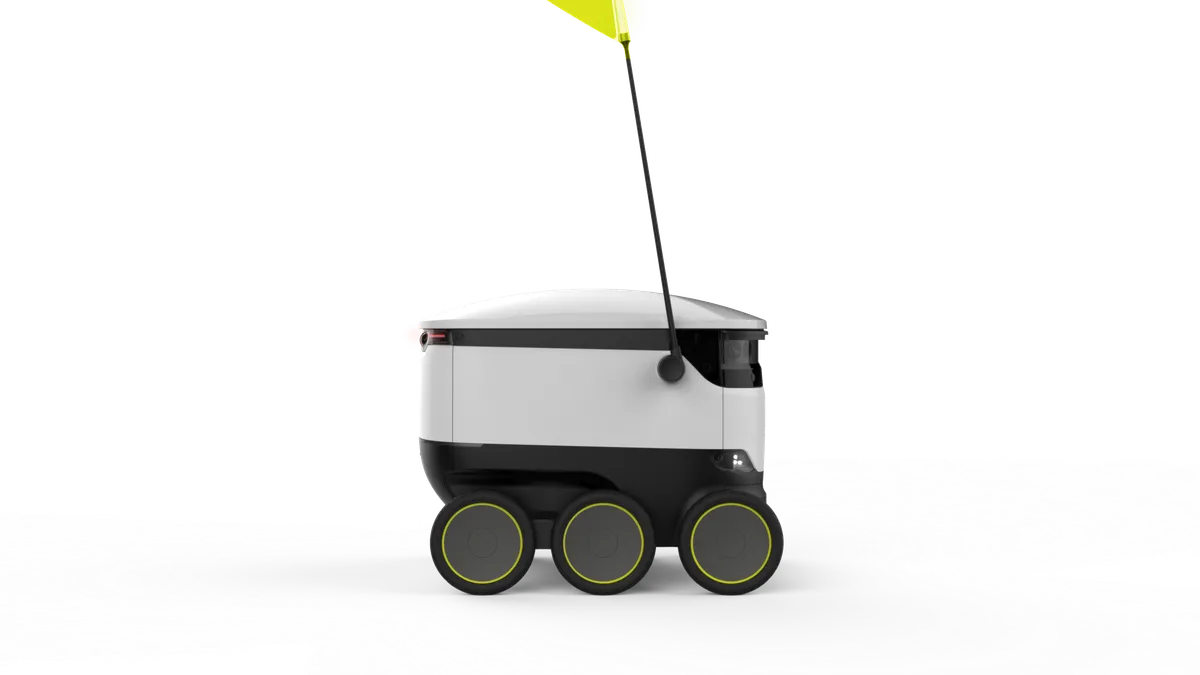Dive Brief:
- Researchers at the Massachusetts Institute of Technology (MIT) released a paper this week showcasing new navigation technology to help delivery robots find customers' front doors more quickly and efficiently.
- The researchers developed a navigation algorithm by which robots use real-time visual clues from their surroundings — employing objects' semantic labels such as "front door" or "garage" — to make immediate decisions and plan routes to their destinations rather than searching for a GPS location on a map. Currently, the standard approach requires mapping an area in advance to guide the robot toward a GPS coordinate on a map.
- The researchers' new algorithm does not consider moving objects — pedestrians, vehicles, etc. — "but this idea naturally connects with our previous work on collision avoidance among pedestrians," Michael Everett, graduate student in MIT's Department of Mechanical Engineering, told Smart Cities Dive in an email. "The robot could use the new algorithm to choose a point... then use our collision avoidance algorithm to drive toward that subgoal while avoiding dynamic objects."
Dive Insight:
This research is partially supported by Ford Motor Company; the MIT group closely collaborates with Ford on many of the company's mobility-related projects. "Their Robotics & Intelligent Vehicles research group provides meaningful technical advice as this type of capability fits into the types of mobility solutions they investigate," Everett said.
The new navigation method uses context to efficiently locate a goal, even in unmapped environments unfamiliar to a robot. It eliminates the need for tedious neighborhood mapping before robot deliveries can occur. It allows for faster, scalable delivery operations because robots spend less time exploring a property before identifying their targets.
Moreover, this approach provides more precise delivery options than what is currently available through GPS mapping. For example, robot deliveries currently can't execute, or would have difficulty executing, special instructions such as "leave package at back door." In fact, customers often have to meet robots outside at the street to receive a delivery. The new method provides a better quality of service.
"The algorithm is domain-agnostic, and our future work will train the system for other contexts, say indoor navigation," Everett said.
As is the case with nearly all new technologies, researchers recognize that this navigation method could have drawbacks. They acknowledge that robots operating so close to people's homes could raise privacy and data security concerns. However, they're taking action to reduce these concerns.
"One of the key motivations of this work is to reduce the need for companies to need to store so much data about specific users ahead of time," Everett said. "We instead use common structures aggregated across many houses to give robots a general sense of how to complete the delivery task in previously unseen environments."
The code the researchers developed is under release review by their sponsors.












